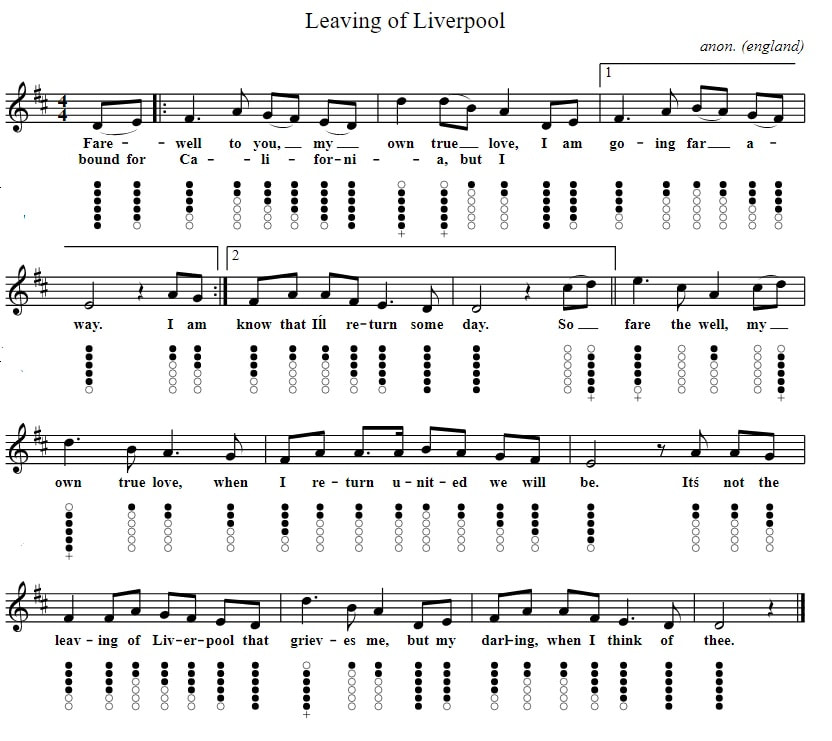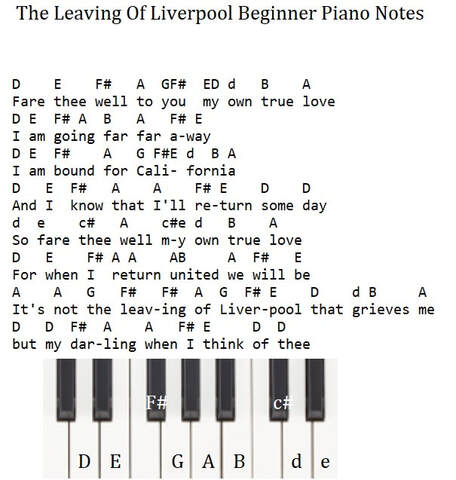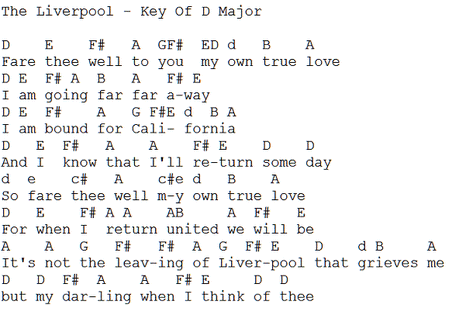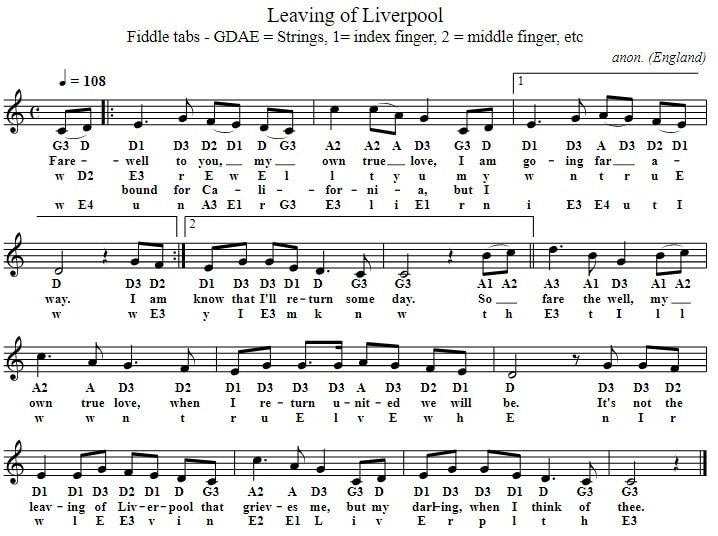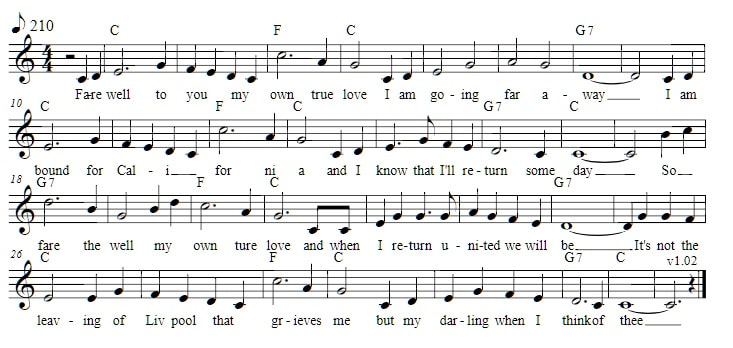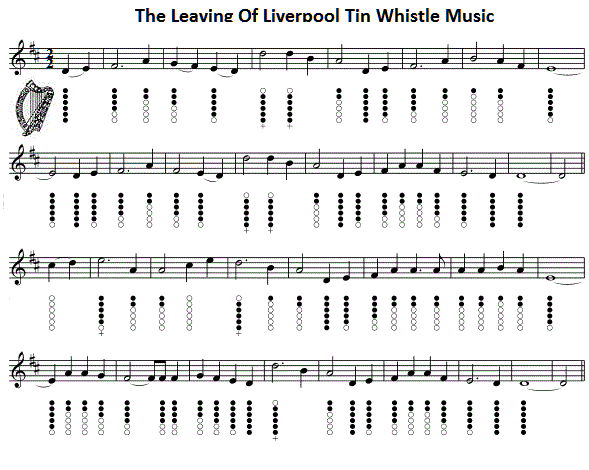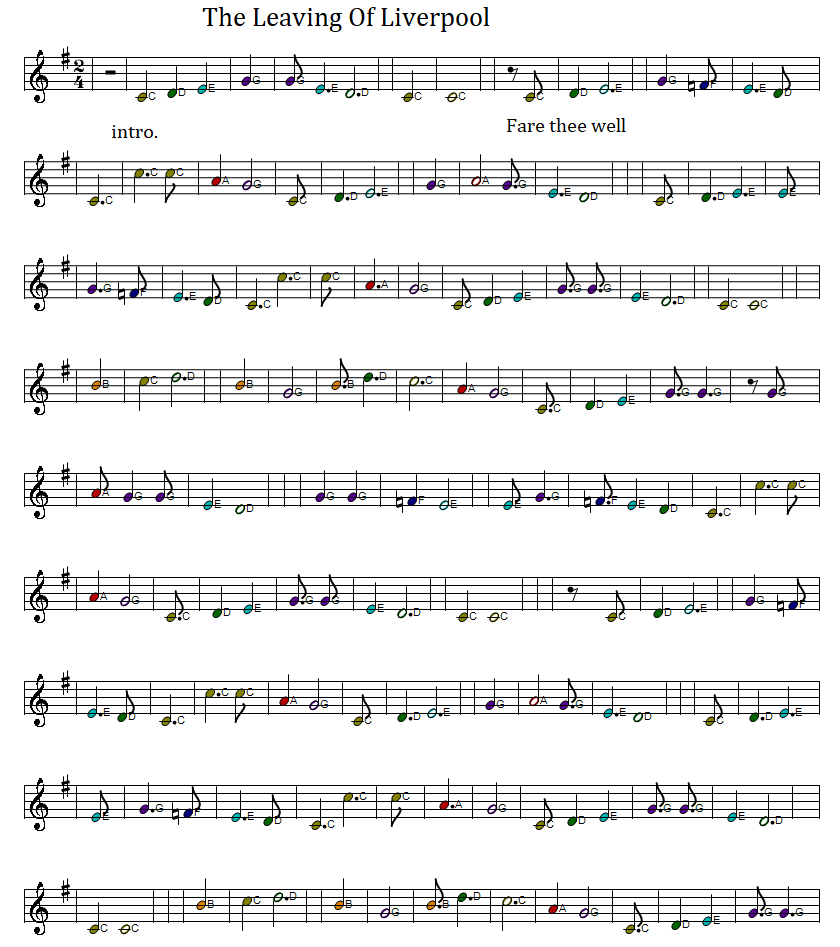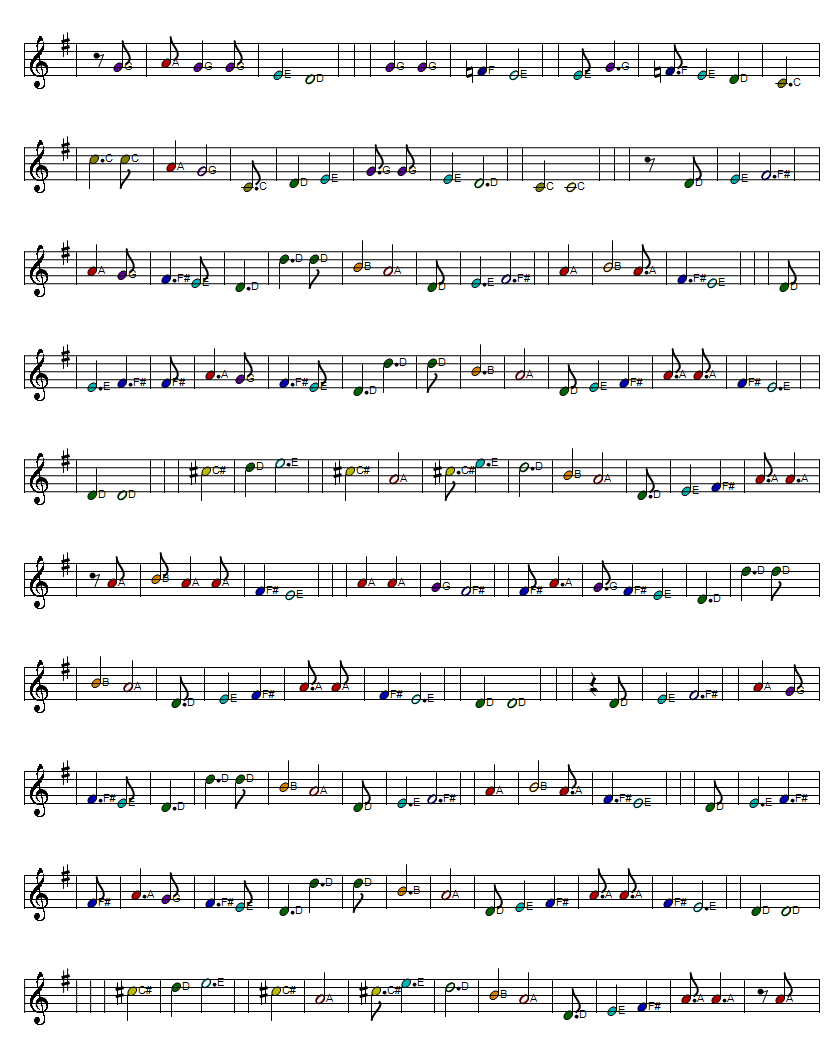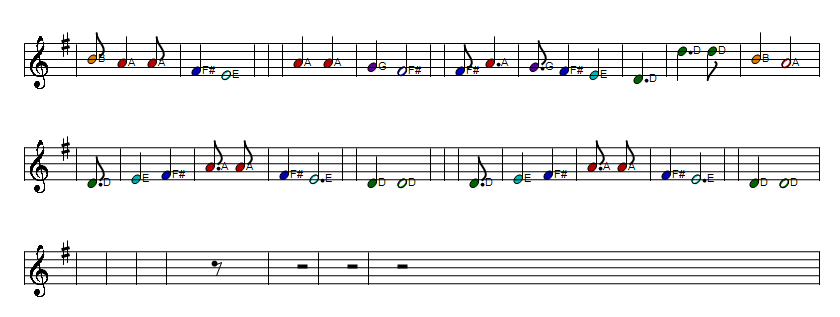The Leaving Of Liverpool sheet music with tin whistle notes
Easy Sheet music and tin / penny whistle notes to The Leaving Of Liverpool. The traditional sea shanty song dates 1880's and recorded by Shane MacGowan and The Pogues, The Dubliners, The Clancy Brothers. Now added is the fiddle sheet music for beginners. The leaving of Liverpool solfege [ Do re mi ] sheet music in the key of D Major now included. There's a youtube video to help you play along with the tune. The easy piano letter notes for right hand are included for recorder and flute players in the key of D. Leaving of Liverpool lyrics and chords is also included on the site for guitar players who are just learning to play.With the amount of Irish groups who recorded this folk song you'd think it was an Irish tune, but as far as I know it comes from England. The sheet music's time signature is 4/4 . There's a PDF file of the score included with chords.
The leaving of Liverpool tin whistle sheet music in D
Below is the list of sheet music and tin whistle songs that are in my ebooks. This is the largest collection of tin whistle songs ever put together.[over 600 songs ] Including folk, pop and trad tunes plus German And French songs along with Christmas Carols.
All of the songs have been made as easy to play as was possible.
The price of the ebooks is €7.50 and will be emailed to you after payment. Please be patient.
All of the songs have been made as easy to play as was possible.
The price of the ebooks is €7.50 and will be emailed to you after payment. Please be patient.
The leaving of Liverpool easy beginner piano notes match the sheet music above.
PDF of the piano sheet music with chords.
| leaving-of-liverpool-piano-sheet-music-with-chords.pdf |
More fiddle sheet music tabs here with a pdf ebook of songs and tunes .
Below is another version of the sheet music in the key of C Major [ Not suited to tin whistle but suited to the recorder or flute ]
Below is the full sheet music score for The Leaving Of Liverpool in the key of G Major
